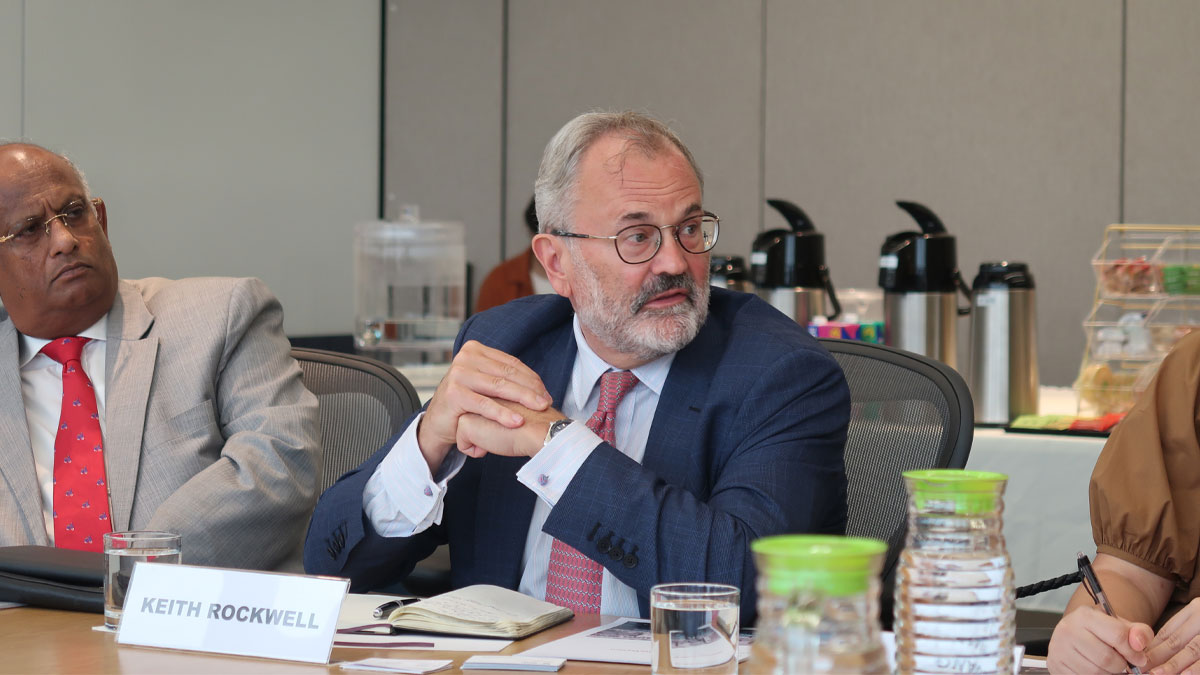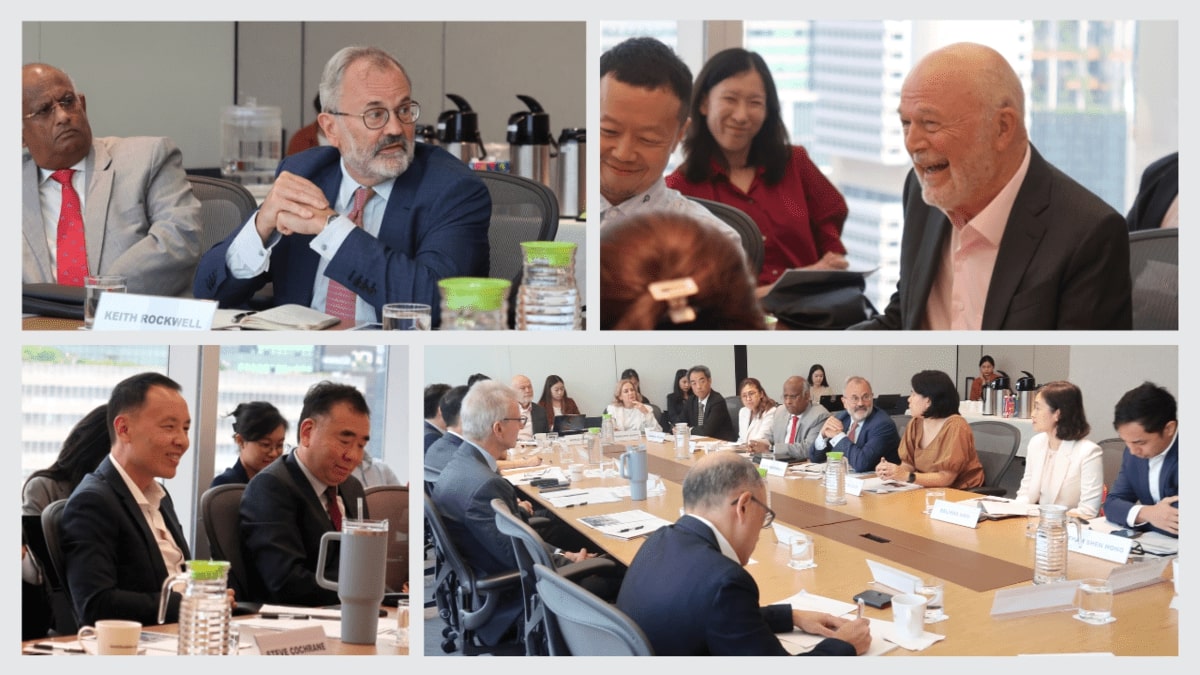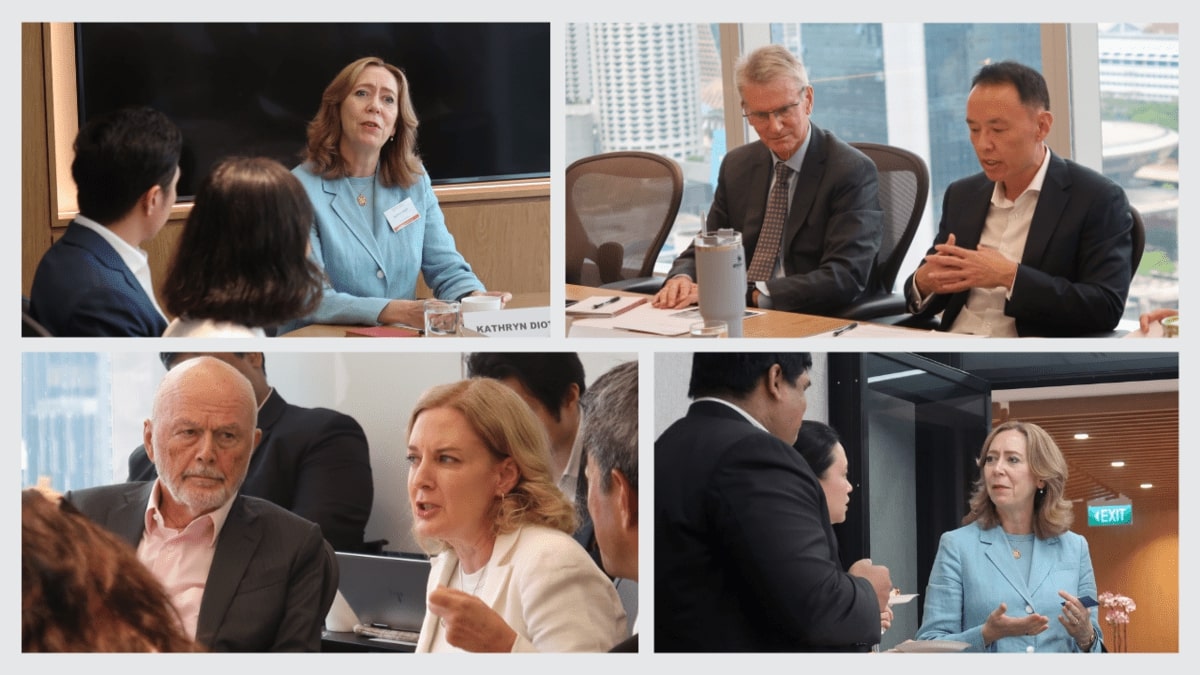Trade pathways: Reviewing the US re-engagement with Asia
Published 26 September 2023
After years of US disengagement with large swaths of the world, the Biden administration has been weighing a deeper engagement with the Indo-Pacific region. This roundtable organized by the Hinrich Foundation and Singapore Institute of International Affairs discussed the ongoing negotiations and whether progress has been made in the US re-engagement with Asia on trade.
The Singapore Institute of International Affairs (SIIA) organized a roundtable dialogue on 30th of August 2023 in partnership with the Hinrich Foundation. Mr Keith M. Rockwell, a longtime expert in international trade as well as a Senior Research Fellow at the Hinrich Foundation, kicked off the discussion with a short presentation. The following is a summary of points raised during the roundtable, which was conducted under the Chatham House rule.
- Cracks in the global multilateral system. A series of global crises – including the COVID-19 pandemic, geopolitical competition, and the Ukraine conflict – have led to cracks in the multilateral trading system and fragmentation in the global order. However, reform is unlikely to materialize anytime soon, especially since the US has not been more involved in the World Trade Organization (WTO) as initially expected with the change in the US presidency from Trump to Biden. This has led to paralysis in the WTO’s dispute settlement system. Many of the trade restrictions enacted by economies including the US, EU, and China would likely not pass muster at the WTO dispute system. There will unlikely be any progress at the February 2024 WTO Ministerial conference.
- A marked shift in US trade diplomacy. The perceived toxicity of trade as an electoral issue has held US policymakers back from more expansive trade agreements. Instead, the Biden administration’s policy focus has turned to friend-shoring with countries the US designates as ‘allies’. Despite being a strong supporter of the Trans-Pacific Partnership (TPP) during his Vice Presidency, Biden has not brought the US back into the Comprehensive and Progressive Agreement for Trans-Pacific Partnership (CPTPP). Such disinterest in forging traditional trade and economic arrangements with trading partners in recent years marks a distinct change in the US’s approach to trade and economic diplomacy.
- Indo-Pacific Economic Framework (IPEF) a mere geopolitical tool? After the US withdrawal from TPP, the IPEF is widely viewed by critics as a “Potemkin village” trade agreement. It has also been criticized for its lack of enforcement mechanism and market access, and current ineffectiveness in fleshing out any detailed multilateral progress on its pillars.
- Market access is good but not necessary to facilitate trade. As the general underutilization of trade agreements has shown, market access isn’t always essential to lift trade. Guidelines, principles, and norms matter more in facilitating trade by providing essential frameworks for cooperation and collaboration for companies and countries. For instance, by laying out principles of agreements for businesses to operate across jurisdictions, Memoranda of Understandings (MOUs) signed alongside the Australia-Singapore Digital Economy Agreement, such as the MOU on Data Innovation, MOU on Cooperation on artificial intelligence among others, can translate into concrete outcomes for businesses without formal market access provisions. In similar vein, the principles laid out in the digital trade chapter of the IPEF, albeit not explicitly stated, may likely provide some sort of market access for firms as well.
- Clean economy pillar could circumvent trade nationalism and mercantilism. In a world marred by pervasive trade nationalism, this pillar will facilitate trade and transfer of wealth through carbon markets.
- US-China rivalry and protectionism raises costs to business and people. Trade tensions and the corollary trade barriers have forced businesses to unnecessarily split up supply chains and forgo cost efficiency considerations, thus raising business costs. As the world’s two largest economies, US-China rivalry and its associated supply chain de-risking policy has led to a consistent rise in the projection of global inflation. While it may not be immediately noticeable, the resulting gradual increase in costs will eventually be passed on and borne by consumers. This is on top of the potential spiral of retaliation, as Biden has not lifted tariffs imposed on China by the Trump administration.
- Trade is not a magic bullet to solve macroeconomic or social issues. There has been over the years an expectation that trade and the access to new markets would be able to solve complex problems simply through the ability to lift all boats through increased economic activity. This has led to a political impasse where trade is both lionized as important but also blamed for many social ills such as inequality. This tension with increased global trade has also led to the fear of the “other”.
Other Hinrich Foundation-SIIA Roundtables:
© The Hinrich Foundation. See our website Terms and conditions for our copyright and reprint policy. All statements of fact and the views, conclusions and recommendations expressed in this publication are the sole responsibility of the author(s).


